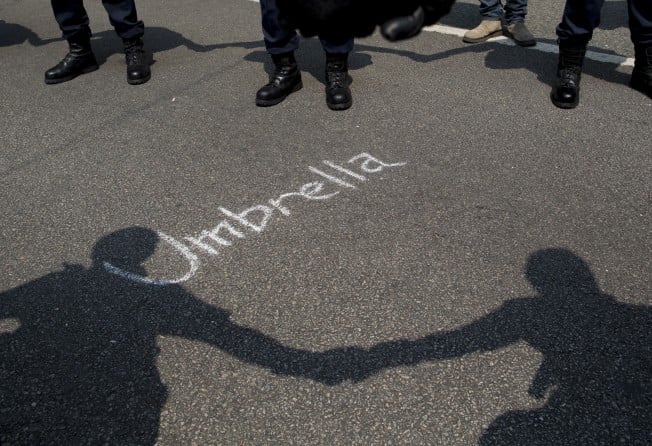Just how revolutionary is Hong Kong's 'umbrella movement'?
Stefan Auer says leaders of Hong Kong's 'umbrella movement' would be wise not to see the 1989 fall of communism in Europe as a sign of things to come

The spectre of a "colour revolution" is haunting Hong Kong. Leaders of the "umbrella movement" are adamant that what they have initiated is not yet another such revolution. They are keen not to frighten the rulers in Beijing and the local administrators. To be sure, the events in Hong Kong are unique. Yet theirs is a non-revolutionary revolution, echoing the tradition of non-violent revolutions in Central Europe of 1989, of which the colour revolutions are rightful inheritors.
It tends to be forgotten that communism's fall in Central and Eastern Europe was instigated by civil society movements that prided themselves on being non-revolutionary and anti-political. Central Europe's dissident intellectuals stressed their aim was not to change the political system in their countries, or their eternal alliance with the Soviet Union. But they ended up doing both.
One of the turning points in recent European history was surely June 4, 1989 - the first semi-free elections held in Poland. They were not free - all the seats for the lower house were still reserved for communist party members; only the upper house was to be elected by popular vote. Yet the results were so devastating for the party that they led to a massive delegitimisation of the rulers in the republic.
The rest is history: other countries in Central and Eastern Europe followed and, by the end of 1989, the Soviet empire was no more. In 1991, even the Soviet Union proper disintegrated. The Chinese leadership will have learned its lessons from this story.
Strangely, the velvet revolutions in 1989 were lawful revolutions. To prevent chaos and anarchy, they sought to maintain the fiction of legal continuity.
The nations of Central Europe have been largely successful in transforming their political and economic systems into a Western-style democracy, but Russia and other nations emerging out of the Soviet Union began on a messy path of development that weakened them. In response, Ukrainians sought to fix their corrupt regime - not to institute a new one - in their "orange revolution" of 2004.
For Vladimir Putin, the Soviet Union's demise was the greatest geopolitical tragedy of the 20th century. The threat of a "colour revolution" was also a wake-up call for him. His regime has been solidified by increasingly autocratic methods, partly in response to the Ukrainian revolution. He continues to preempt any chance of public mobilisation against his rule by painting rivals as "colour revolutionaries" funded by the West and betraying the people's true interests.
This is where Putin's interests collide with Beijing's. While 1989 is commemorated in Europe as the rebirth of freedom, June 4 has a different meaning in Beijing (none) and Hong Kong (the Tiananmen Square massacre).
Hong Kong's student leaders might have been prudent to disown the legacy of the velvet revolutions and their more recent coloured reincarnations. Moscow in 1989 was no longer intent on keeping the integrity of its empire intact. Beijing in 2014 shows no signs of willingness to have its empire challenged. If it was forced to choose between two systems and one country, the choice would not be to the liking of democratic forces in Hong Kong.
Stefan Auer is an associate professor in European studies and programme director at the University of Hong Kong School of Modern Languages and Cultures